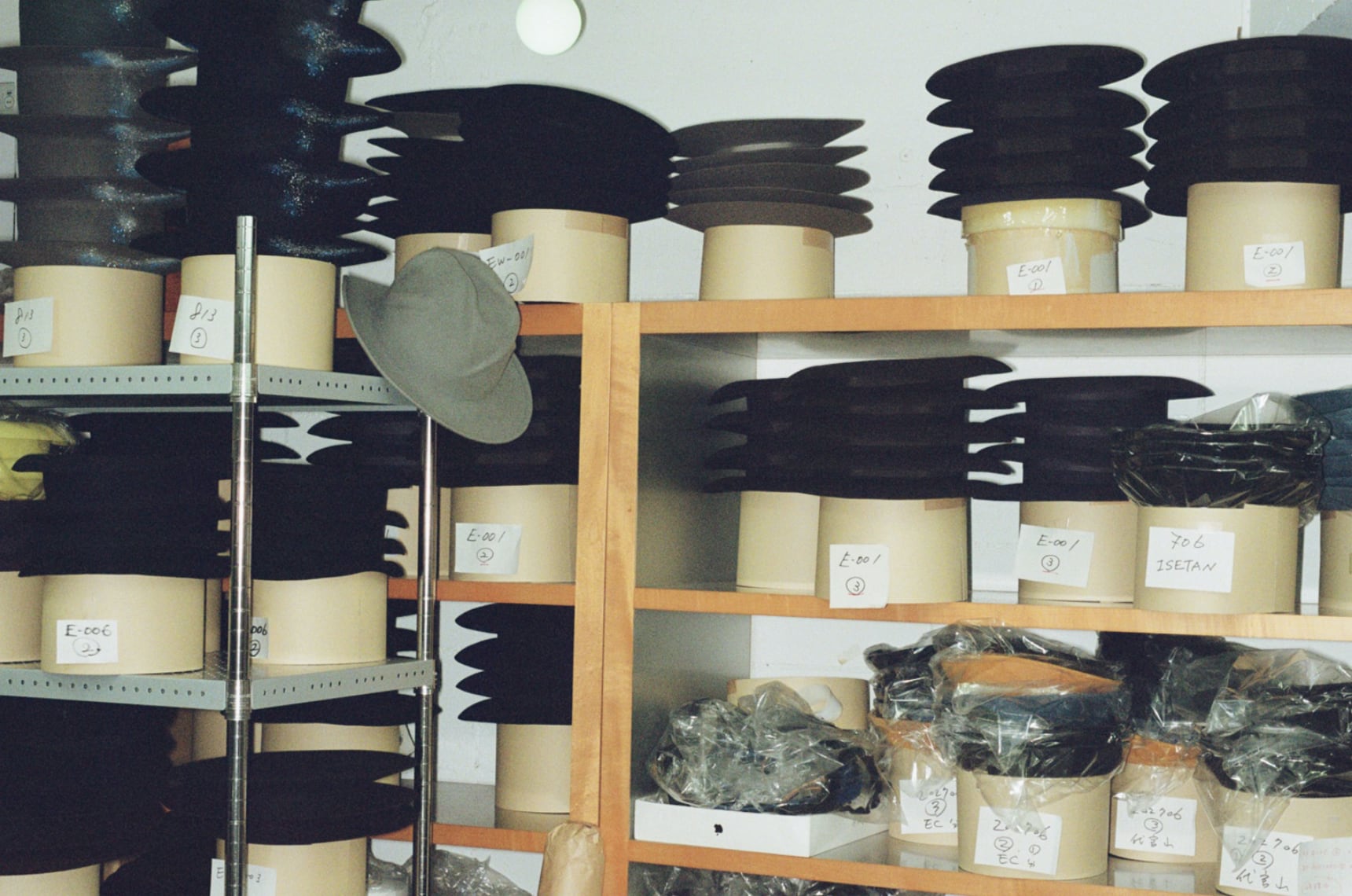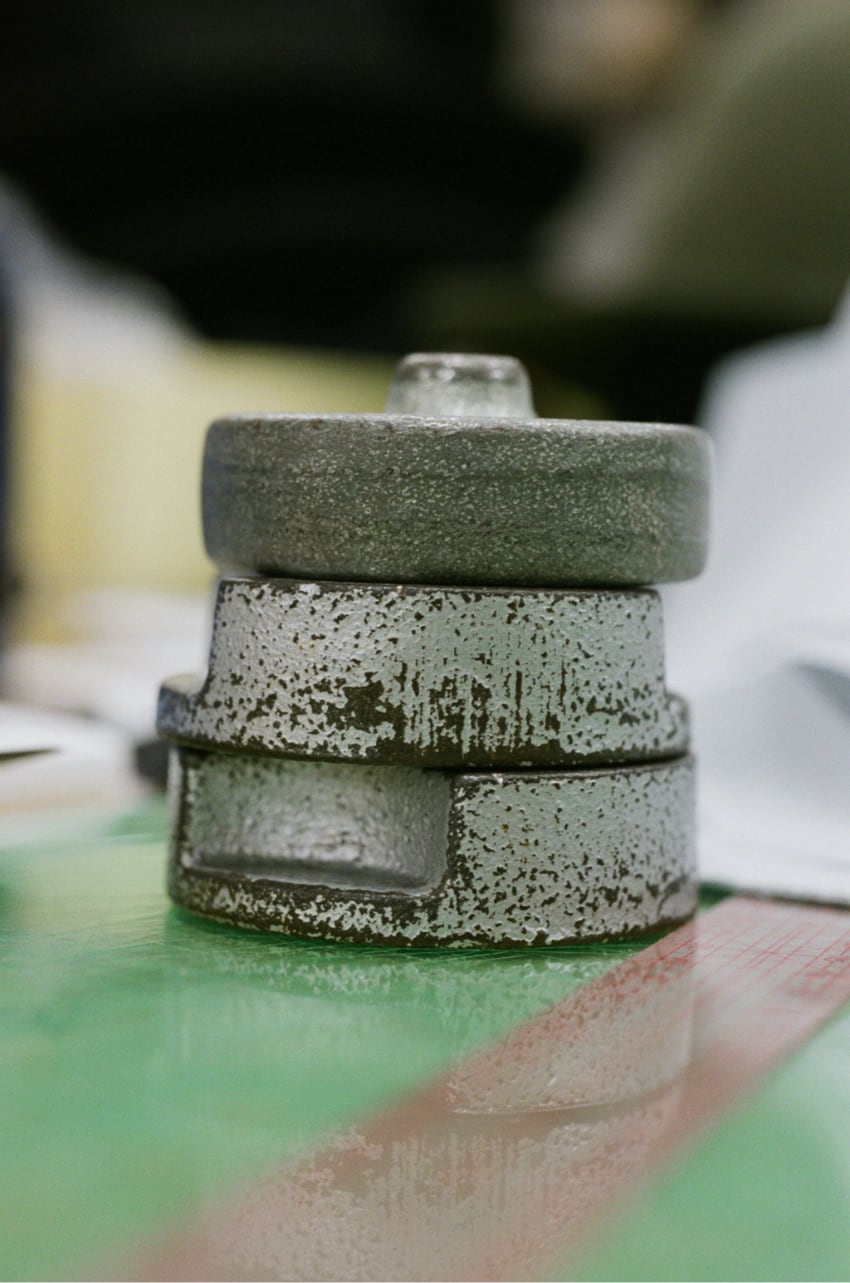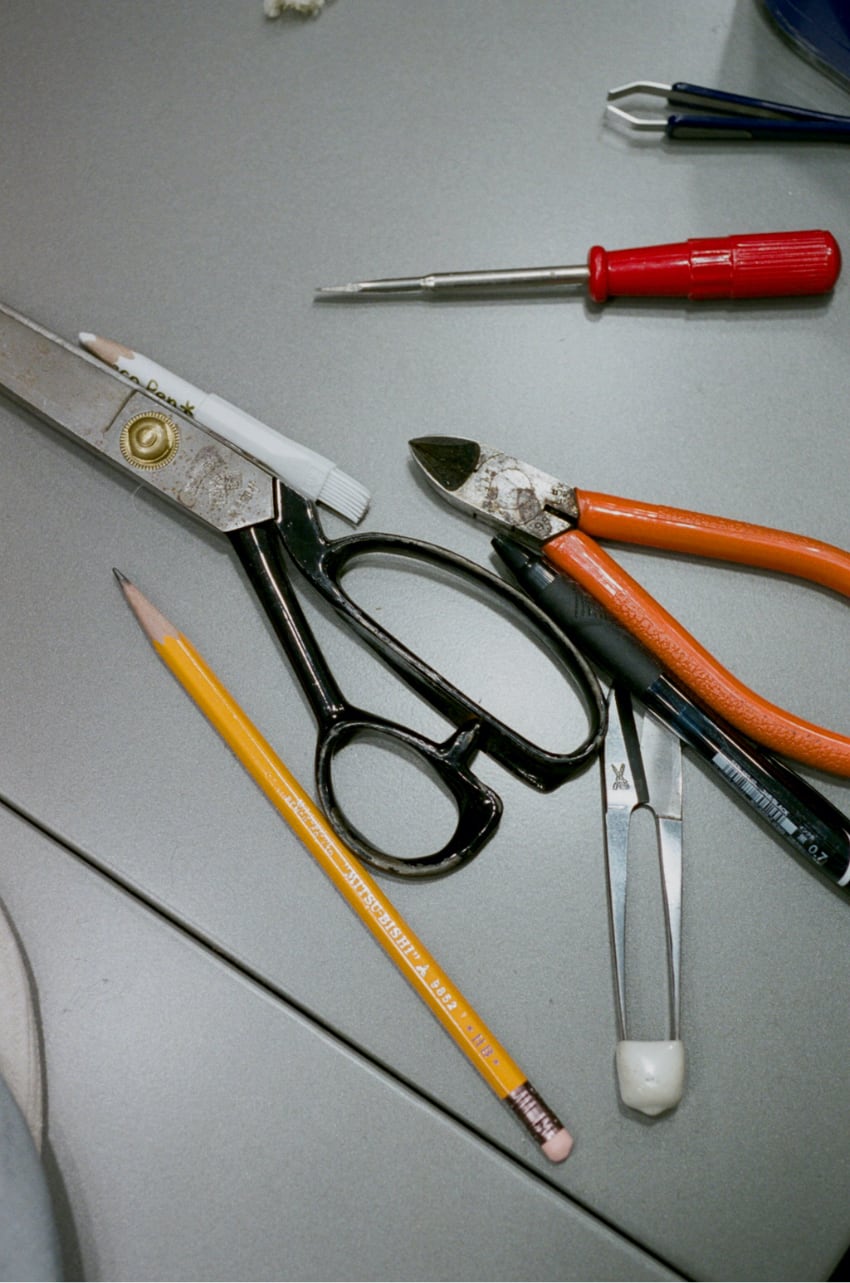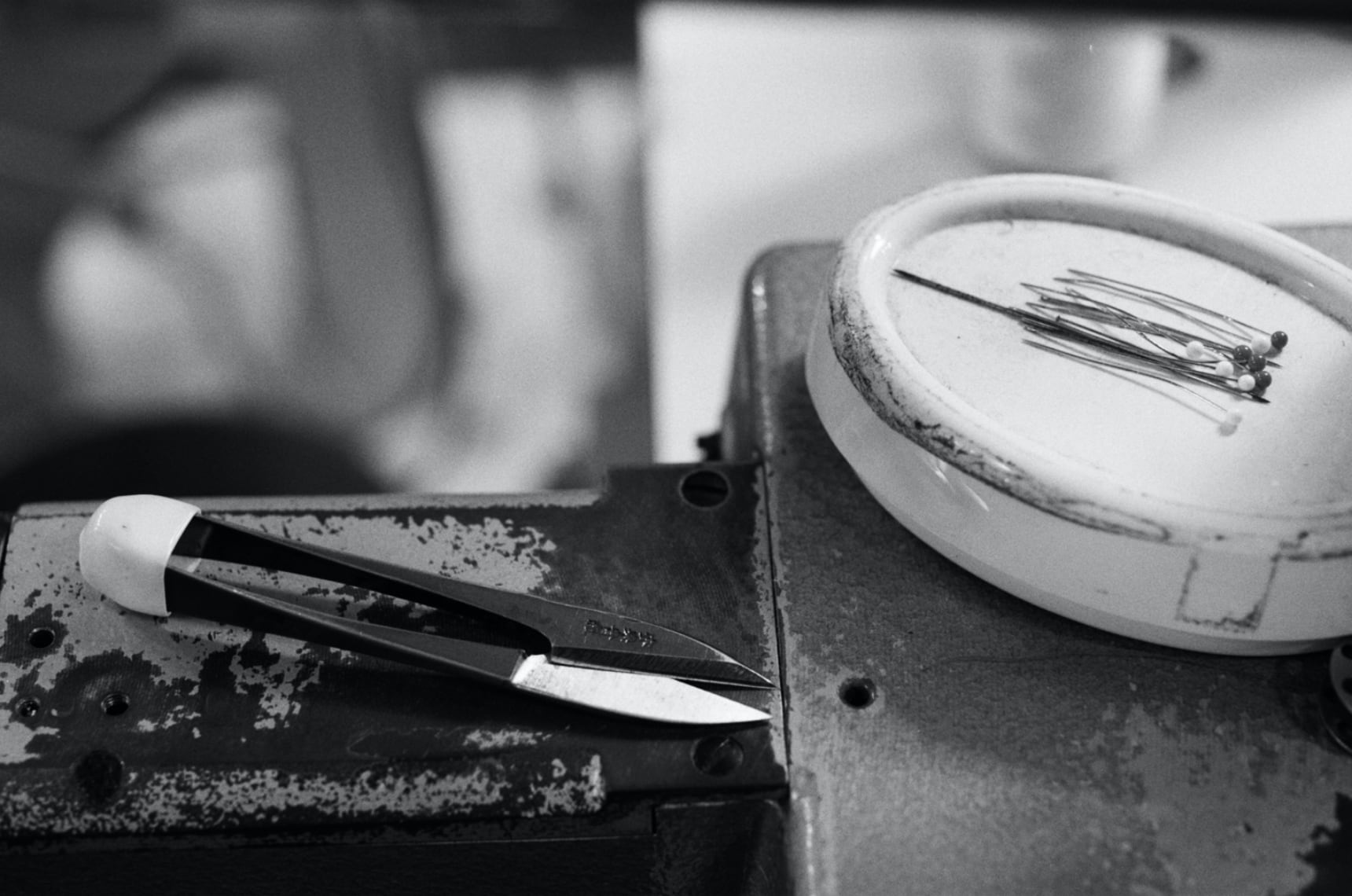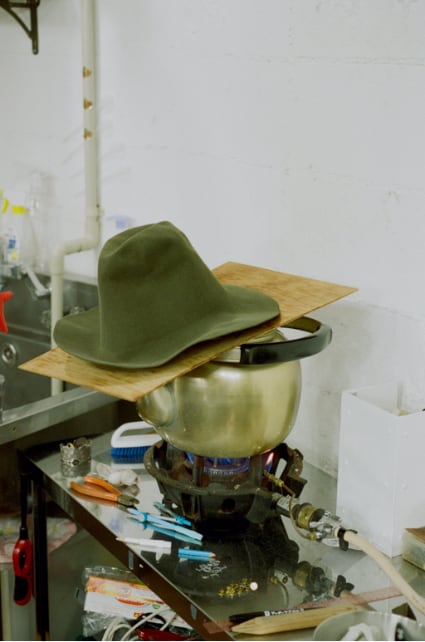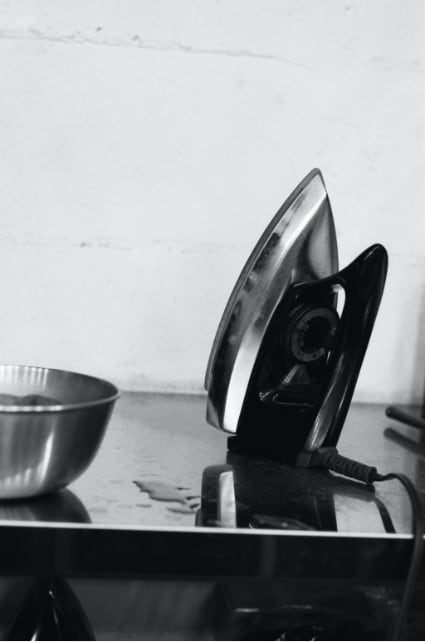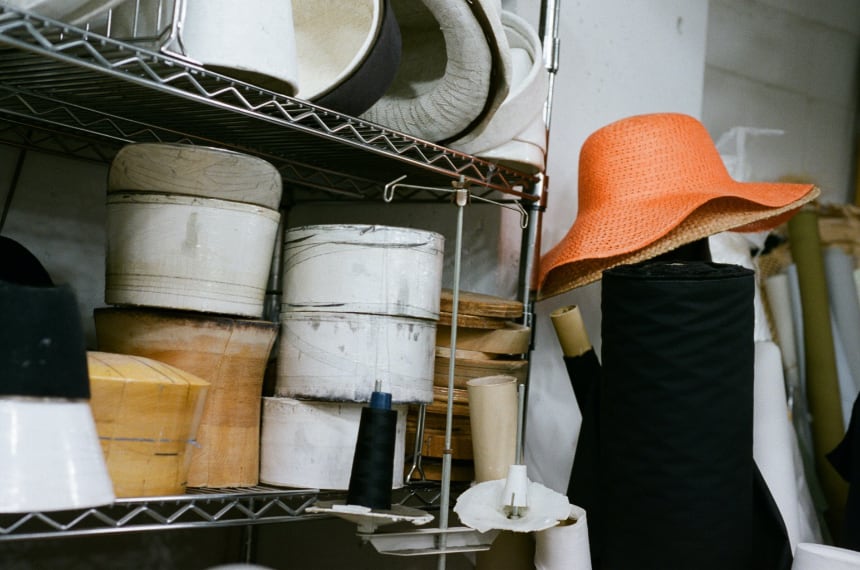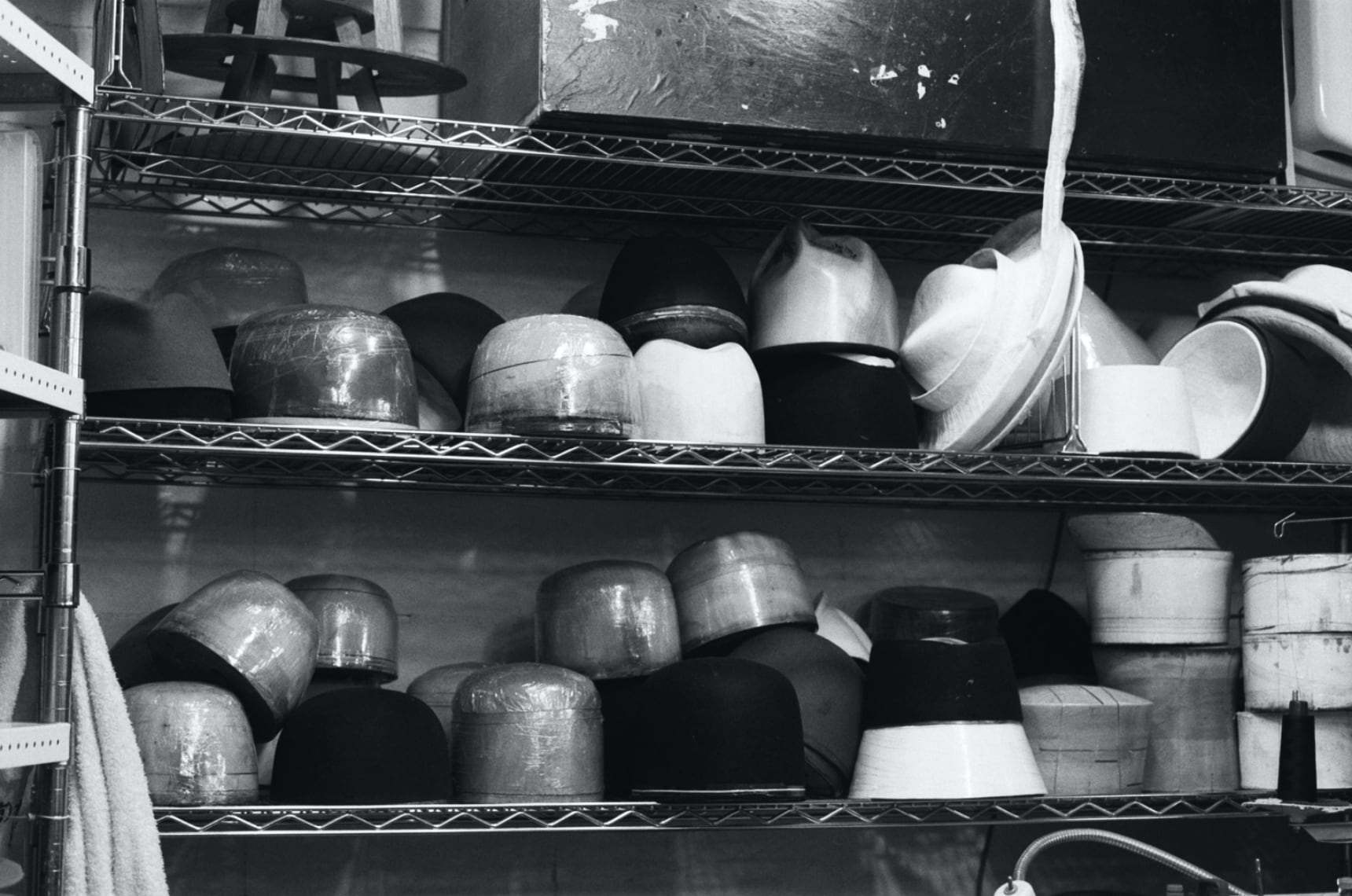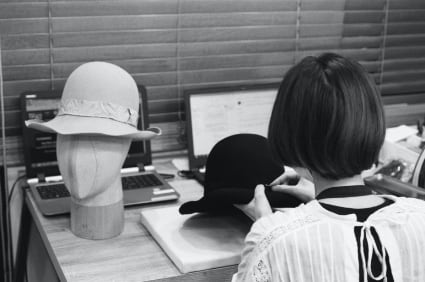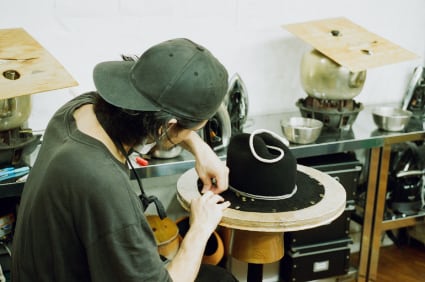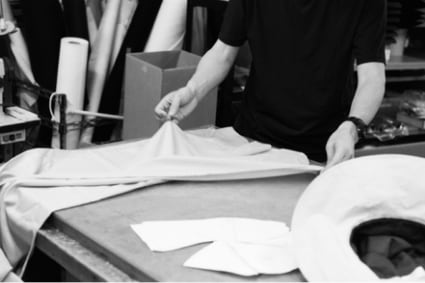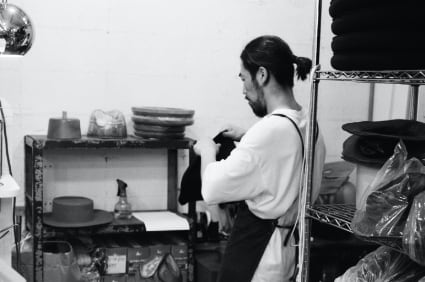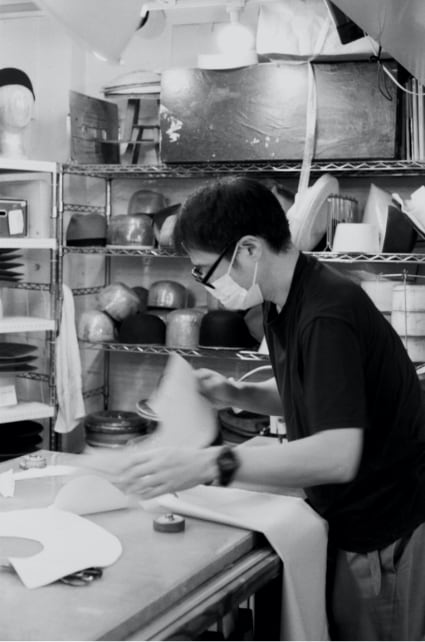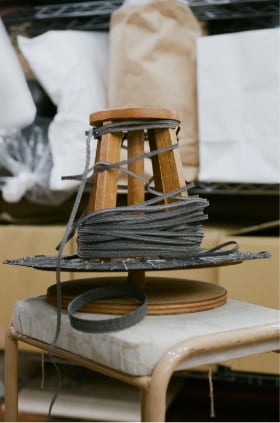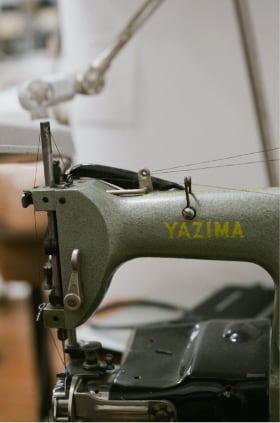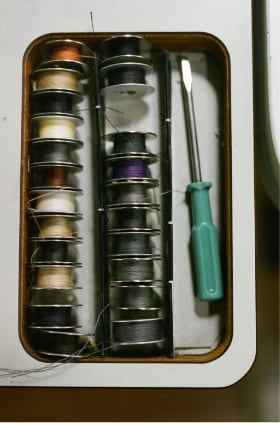OTHER
#001
2021.01.18
There is a store directly managed by Takayuki Kijima in Daikanyama, Tokyo. Our atelier is directly below it and the history of our artisans and hat-making since our establishment in 1995 is carved into a space of about 70 square meters with a focus on the designer Kijima. In our atelier, we craft things using various materials such as felt, straw, and braids. Depending on the material, the sewing machine, tools, and methods used vary, but our ability to produce consistent work is one of the interesting things about this atelier. Other than samples of our collections, mass production of seasons are also produced in this atelier.
東京・代官山にキジマ タカユキの直営店があります。アトリエはその真下にあり、1995年設立からデザイナーの木島を中心に職人たちや帽子作りの歴史が70平米ほどの空間に刻まれています。アトリエでは、フェルト、ストロー (麦藁) 、ブレードなど様々な材料を使用してものづくりを行なってます。材料によって使用するミシンや道具、製法などが異なりますが、一貫して生産することが出来るのが、このアトリエの面白いところです。コレクションのサンプルはもちろんですが、シーズンの量産もこのアトリエで生産しています。
The method we use to make felt hats is not mass production by pressing them with metal molds. Instead, we use wooden molds and carry out every single step by hand. By doing so, our hats feel soft when worn, which is impossible to achieve by using the former method, and this is a distinctive factor of our brand. Also, other than using wooden molds, we also proactively incorporate the haute couture technique called buckram (spartre), a “chip” made using tree bark and paper in a fibrous state. As the chip is allows for a high degree of freedom of expression, we often make original molds for collection brands with strong elements of design.
フェルトハットの製法は金型でプレスする大量生産型ではなく、木型を用いて一つ一つの工程を全てハンドメイドで作ります。それにより前者には無い、柔らかな被り心地が生まれて、ブランドの特徴的な要素になっています。また、木型を使用する以外にもオートクチュールの手法であるバクラム(スパットリー)と呼ばれる木の皮や紙を繊維状にした材料を使用して作り上げる”チップ”も積極的に取り入れています。チップは表現の自由度が高い為、デザイン性の強いコレクションブランドへオリジナルの型を作ることも少なくはないです。
(A part of a wooden mold. The white thing that can be seen on the top right corner is the chip)
(木型の一部。右上に見える白いものがチップ)
A single hat is the result of each step being broken down into parts, such as precise tasks such as inserting the molds, attaching ribbons, and sewing by hand, as well as those who can handle braid machines to sew only by intuition.
型入れ、リボン付けや手縫い等の緻密な作業、感覚のみで縫い上げるブレードミシンが扱える者など、工程ごとパートに分かれ一つの帽子が出来上がります。
The designer himself gets involved in the production.
デザイナー自身も生産に携わる。
In particular, controlling the braid sewing machine requires a high level of skill. The length of the stitches are adjusted by the pressure of the thumb and index finger and the ring and pinky fingers pull to shorten and tighten the stitches. As the hat cannot be placed onto the mold while sewing it, the sewing process is repeatedly stopped to match the mold before it is finished. The fewer steps there are to this process, the more beautiful and less likely a hat is to get out of shape. He imagines what the finished hat will look like on someone’s head while sewing it and tries to match it to the mold as much as possible. To carry out these tasks at the same time, experience and skills cultivated over many years are necessary and there are also methods of sewing and materials that only Kijima can handle.
特にブレードミシンの操作には非常に高度な技術が必要とされ、親指と人差し指の抑える圧によって縫いの長さを調節し、薬指と小指との引き具合で縫いを短くし絞りを効かせていきます。縫いながら型にはめることはできない為、縫って止めては型に合わせてという工程を重ねて仕上げていきます。この工程が少ないほど美しく、型崩れしにくくなります。縫いながらも頭で仕上がりを想像し極限まで型に対し狂い無く作っていきます。これらの作業を同時に行うには、長い年月をかけて培われた経験と技術が必要とされ、木島しか扱えない縫い方や材料もあります。

